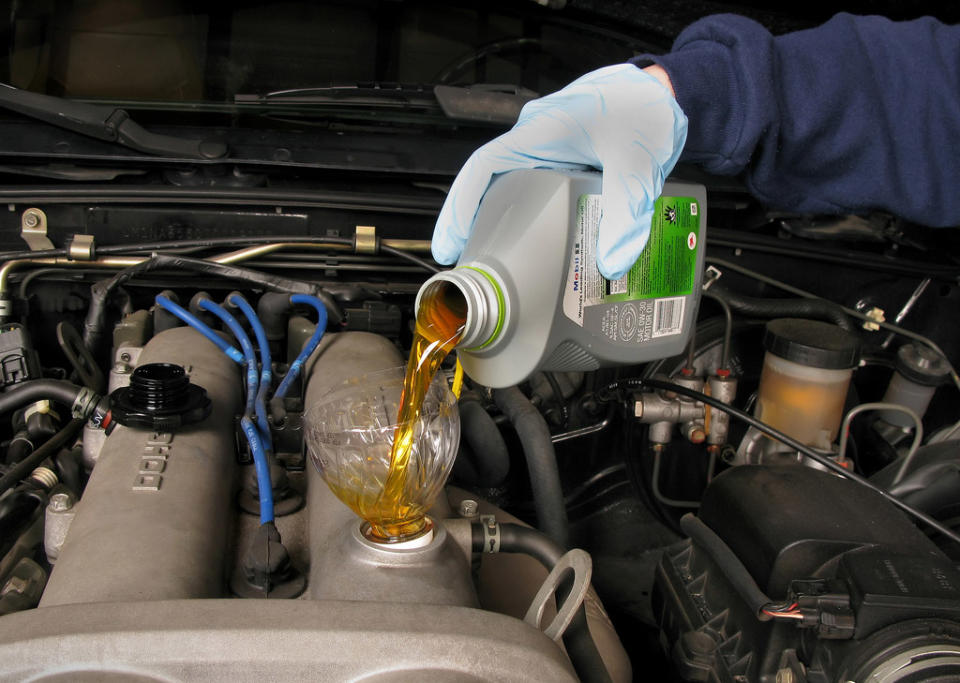How to care for an aging car
MORE AT POPULAR MECHANICS
As the U.S. economy continues to battle tough headwinds, many drivers are keeping their cars longer. The average age of a passenger vehicle in the U.S. has increased to about 11 years, according to researchers R.L. Polk. (It was only nine years back in 2000.)
I'm in that aging-car crowd. I own two 12-year-old vehicles, one with 168,000 miles on its odometer, the other with just under 100,000. My 9-year-old car has suffered through 170,000 miles and two teenagers. My "new" car is a 2007 with 72,000 miles on it. My son drives an 18-year-old vehicle with more than 200,000 on its intermittently operating odometer.
Here are some of the things I do to help keep these vehicles alive:
Love Thy Cooling System
Hoses that carry engine coolant live a hard life. They're forced to transport high-pressure fluids that can exceed a rubber-scorching 240 F. Meanwhile, the water pump gets no respect—no respect at all—even though the engine would die without it in minutes. In retaliation, these components conspire to fail on aging cars at the worst possible times and places—extremely hot or cold days in areas with poor cell coverage are among their favorites.
If you don't know when your old vehicle's coolant hoses were last replaced, now would be a good time to do it. Don't forget heater hoses, which carry hot coolant into the passenger compartment. As for water pumps, they often warn of their impending death by emitting an odor reminiscent of pancake syrup or by piddling green fluid on the garage floor. If you're already undertaking significant work on the engine in an older car, go ahead and replace the water pump while things are disassembled.
Trust me. I learned this one the hard way. We didn't have the water pump in an old car changed, and my daughter took the car to college in North Carolina. She called and said it smelled like breakfast at Waffle House, and she wanted me to drive 7 hours round trip to take it to the dealer because she wasn't confident around service writers and mechanics. I convinced her to share with them that she was the daughter of a Nascar driver. (True: I ran one Nascar Southwest Tour Series race.) At that point, she would become the intimidator and not the intimidated.
Brake Time
Keeping the braking system youthful will help your vehicle live long and prosper. If you inherited or purchased an older car, bleed the brakes. With a helpful friend, the right tools, and a repair manual, brake bleeding is no harder than an oil change.
If the brake fluid flows a clear, amber color, the system likely has been recently rebuilt and well-maintained. If the fluid spurts out dark black and is filled with bits of rubber and rust, a complete brake overhaul is your first priority.
Brake jobs are to DIY mechanics what blue-square runs are to a snow skier: Not too challenging for those with intermediate skills. When I was wrenching my own race car, I bled the brakes after every on-track session. That did two things: removed the overheated fluid from the calipers and made sure nothing was seriously wrong with the brakes.
To keep your brake system young, flush (completely replace) the brake fluid every two years. And, like we said about the cooling system, if you're already dissembling the brakes for major repairs, check on the smaller pieces while you're in there. If your car is more than seven years old, replace the rubber brake lines when major brake work is required. If the rotors or brake drums must be removed, check the wheel bearings.
Black Gold
When you remove the engine oil-drain plug of an old car, you hope to discover a not-too-dark amber fluid. If the fluid that flows from your crankcase is jet black and contains bits of silvery flakes, you've got problems. A worse sign is if the oil struggles out like curdled milk. Even worse is if the oil contains big chunks of metal, which happened to me once after the confluence of my racing and engine-building skills. Hey, I was sticking my neck out; I made the engine stick its out, too. And it died.
When faced with such a situation, I try this high-colonic procedure: Drain the oil, replace the oil filter, fill the crankcase with synthetic oil (which acts like a solvent for sludge), and drive the car 50 or 100 miles. Repeat until the oil runs almost as clear as new. If you find little progress after three changes or suspect the previous owner was negligent on oil changes, consider having a professional mechanic remove and clean the oil pan.
Don't DIY Everything
Cars are just like people. As they age, they require more attention from specialists, especially in the regions most critical to their ongoing survival.
So periodically have an independent repair shop check critical steering and suspension components. Very experienced DIYers can do this work themselves, but even experts might choose to farm it out to someone who does this work every day just for the added peace of mind. When I repacked the front wheel bearings on my race car, it hurt my lap time—I couldn't concentrate on keeping my right foot to the floor while wondering if I'd done the job correctly.

 Yahoo Autos
Yahoo Autos 

